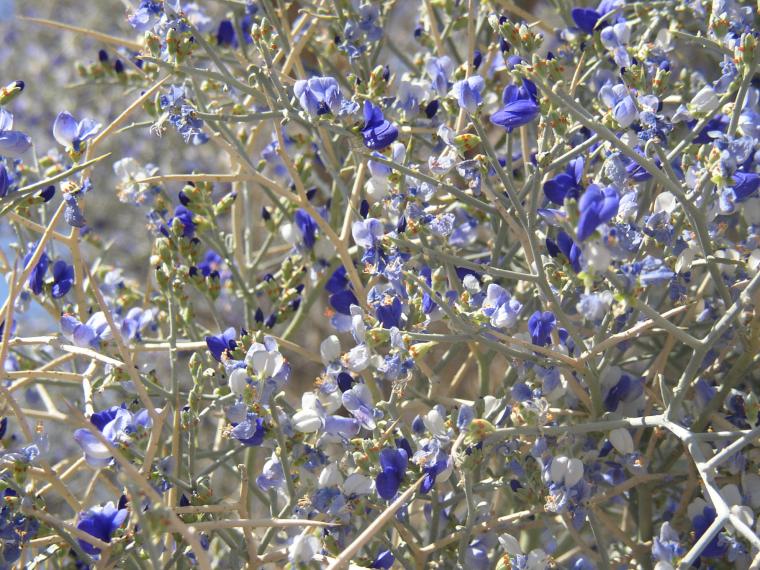Collaborations
DELEP has been involved in many collaborations since its inception in diverse fields ranging from ecological restoration, biomedical research, to genomics.
Land Management and Ecological Restoration
- In 1990-1991, DELEP grew and planted 200 plants of Acaciella angustissima at the Buenos Aires National Wildlife Refuge as part of a project with the U.S. Fish and Wildlife Service to see if the seeds produced by the plants might contribute to overwintering survival of the endangered masked bobwhite quail.
- The Arizona State Land Department contracted with DELEP from 1993-2001 to produce thousands of tree seedlings each year for conservation plantings around the state.
- In 1996, Sam Bamberg & Associates arranged for DELEP to grow 300 seedlings of Olneya tesota for a revegetation project at the Chemgold Inc. Picacho Mine in California.
- In 2017, DELEP hosted Dr. Fritz Heystek and Dr. Yoganambal Kistensamy from the Plant Protection Research Institute of the Agricultural Research Council in South Africa who were investigating mesquite twig girdlers as a biocontrol agent for invasive mesquite in South Africa.
-
DELEP personnel and Dr. Jack Stroehline established a mesquite planting at the UA's Page Ranch north of Tucson to evaluate mesquite growth using water catchments.
Commercial Applications
- In 1989-1990 DELEP provided plant material to researchers at Monsanto for commercial applications analysis.
- DELEP collaborated with Sankyo Co., Ltd. to provide plant material for biomedical screening from 1992-2003. The program was involved in a similar project from 1994-1996 with the UA Southwest Center for Natural Products Research and Commercialization that was sponsored through the Clayton Foundation.
- From 1990-1994, DELEP worked with International Floratech to grow over 1,000 seedlings of Psorothamnus spinosus and plant these on a farm near Wellton, in southwestern Arizona. The calyx glands of this species yield an aromatic resin that was being evaluating for use in cleaning products and cosmetics.
Psorothamnus_spinosus_flowers.jpg

DELEP worked with International Floratech to evaluate the aromatic resin produced by the the orange calyx glands of Psorothamnus spinosus flowers (pictured) for use in cleaning products and cosmetics
Academic Research
- In 1994, DELEP hosted Mr. Shoaib Ismail from the Biosaline Research Labs at the University of Karachi, Pakistan.
- Also in 1994, DELEP hosted Dr. Mohamed Thanaa Hassan from the Agriculture Research Station in Alexandria, Egypt.
- 1994 also saw DELEP hosted Dr. Shafik Ahmed El Gendy from the Aain Shams University, Cairo, Egypt to look at low water-use landscape plants.
- In 1997, DELEP hosted Fulbright Scholar Dr. Alejandra Vilela from the University of Buenos Aires, in Argentina, who conducted a project to evaluate simple, low-cost propagation techniques for Prosopis for use in rural tree planting programs and agroforestry.
- In 2002, DELEP hosted Dr. Joe Miller who was collecting samples for phylogenetic analysis leading to a taxonomic revision of the genus Acacia.
- In 2009, DELEP hosted Dr. Jorge Santiago-Blay who made collections of gum exudates from legumes in DELEP's fields.
- In 2013, DELEP personnel consulted on a project to grow Joshua trees (Yucca brevifolia) at the Northeast Forestry University in Harbin, China.
- In 2013, DELEP researcher Dr. Margaret Norem derived C-values for several legumes species using the laboratory of Dr. David Gailbraith at the UA Bio5 Institute.
- In 2017, DELEP grew plants of Abrus precatorius and provided leaf samples to researchers at the Los Alamos National Laboratory for genomic sequencing.
